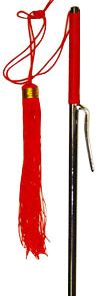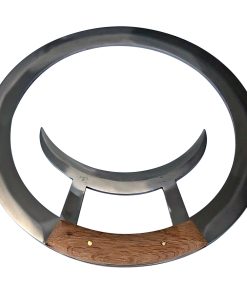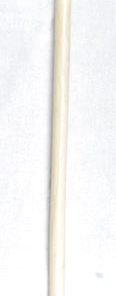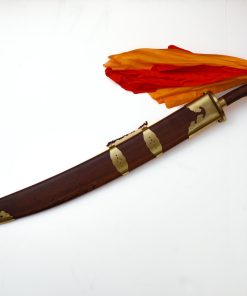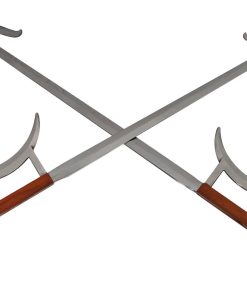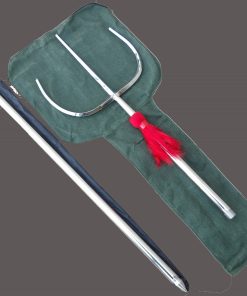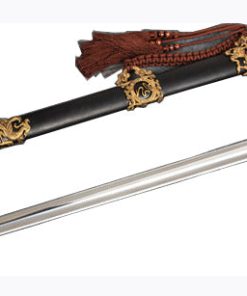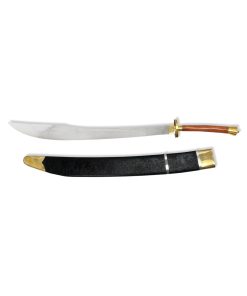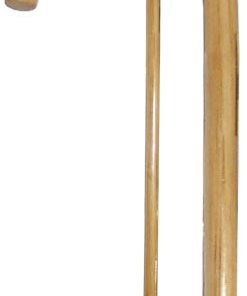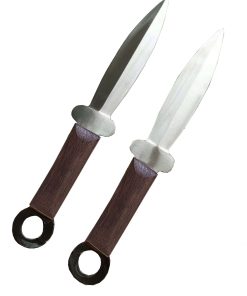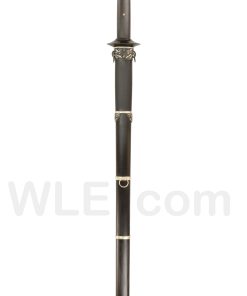Jutte Sword Breaking AKA Jitte Wing Lam Enterprises
$ 39,94 $ 23,96
This Jutte (Jitte) weapon weighs 1.10 lbs. and is approximately 16″ long. It has a red wrapped handle with an attached double red tassel.
A Jutte (Jitte) was use to maintain control, Edo Period police officers and their non-samurai assistants developed many unique weapons and arresting techniques against troublemakers, who were usually armed and frequently desperate. These included such items as a pole-arm implement with many metal barbed hooks to entangle the clothes of a suspect and immobilize them by forcing them to the ground. Wooden ladders and short staffs were also employed to capture an offender unharmed.
One of the more unique weapons of the samurai police was the jutte. Basically an iron truncheon, the jutte was popular because it could parry the slash of a razor-sharp sword and disarm an assailant without serious injury. Essentially a defensive or restraining weapon, the length of the jutte requires the user to get extremely close to those being apprehended.
A single hook or fork, called a kagi, on the side near the handle allowed the jutte to be used for trapping or even breaking the blades of edged weapons, as well as for jabbing or striking. The kagi could also be used to entangle the clothes or fingers of an opponent. Thus, feudal Japanese police used the jutte to disarm and arrest suspects without serious bloodshed. Eventually, the jutte also came to be considered a symbol of official status.
Fast Shipping and Professional Packing
Thanks to our longstanding association with UPS FedEx DHL and other top global carriers, we are able provide a range of shipping options. Our warehouse staff are highly trained and will be able to pack your goods in accordance with the exact and precise specifications. Your goods are thoroughly checked and properly secured before shipping. We ship to thousands customers every day from all over the world. This shows how we're dedicated to becoming the biggest retailer online in the world. The distribution centers and warehouses distribution are in Europe and the USA.
Orders that include more than one item are given processing time in accordance with the item.
Before shipping before shipping, we'll inspect thoroughly the items you've ordered. Today, most orders will be delivered within 48 hours. Delivery is expected to take between 3 and 7 days.
Returns
The stock is constantly changing. It is not managed entirely by us, since we are involved with multiple parties such as the factory and the storage. The actual inventory can change at any moment. It's possible that the stock may run out after your order has been placed.
The policy is for 30 days. If you have passed 30 days without a trace since the purchase and we are unable to offer an exchange or refund.
The item cannot be in use and must be in its original condition. You must have the item in the original packaging.


